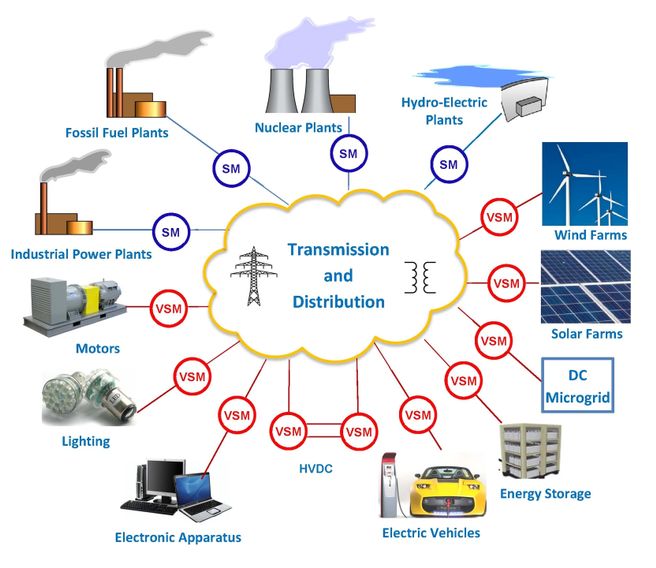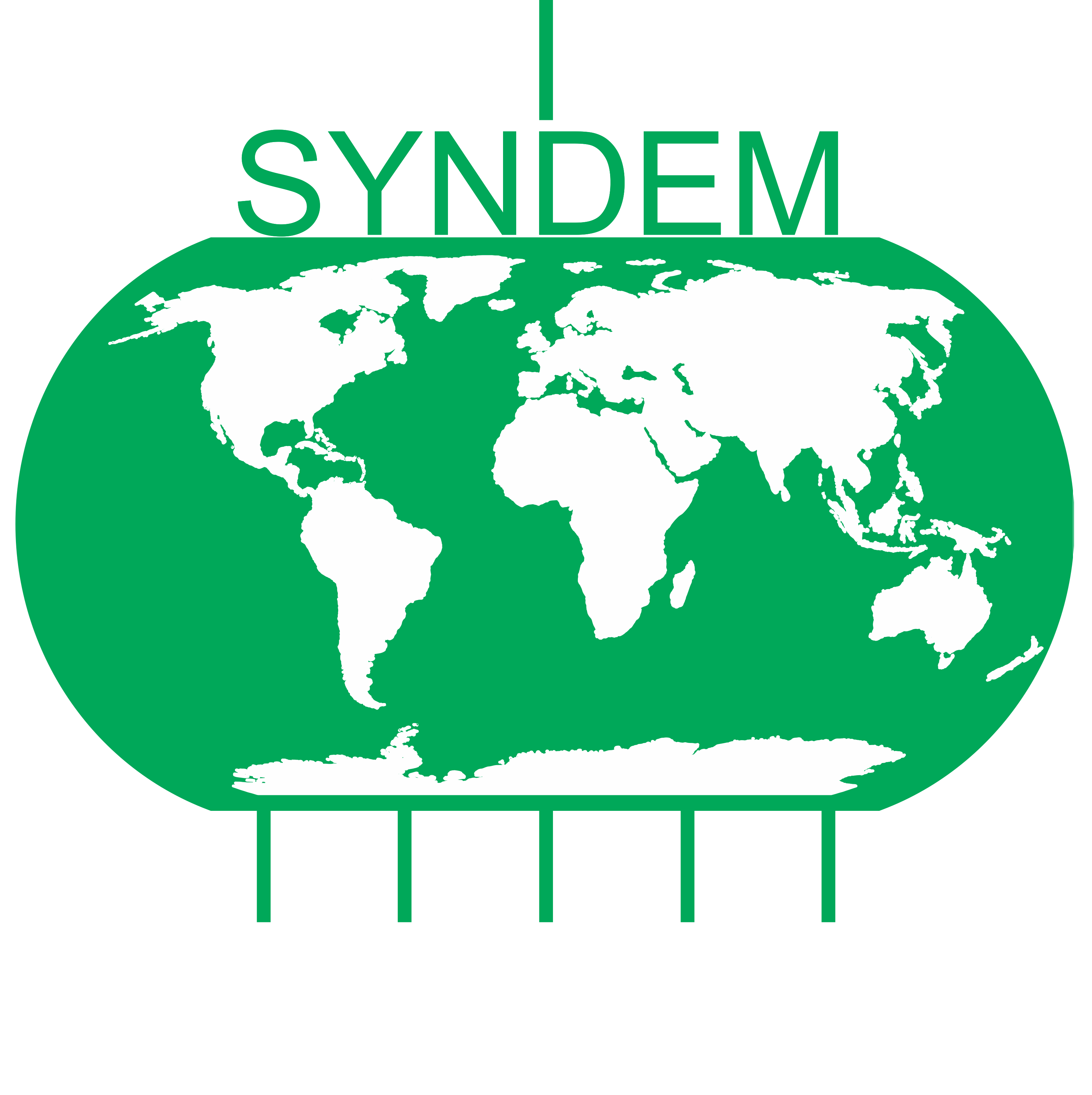SYNDEM Architecture


The paradigm change of
power systems from centralized generation to
distributed generation is widely regarded as the
democratization of power systems. Democracy is a
political concept that empowers all eligible
individuals to play an equal role in
decision-making. Rule of law and legal equality
are the most fundamental features of a
democratized society. The rule of law implies that
every individual is subject to the law and the
legal equality implies that all individuals are
equal. However, an important fact in a
democratized society, i.e., individuals can have
different or even divisive opinions, has to be
avoided in a democratized power system. If the
democratization of power systems is to be
implemented, it is vital to guarantee that all
players would synchronize with each other for a
common goal, i.e., to maintain system stability.
Hence, democratized power systems should be
synchronized as well, leading to the concept of synchronized
and democratized (SYNDEM) smart
grids.
In order to realize
SYNDEM smart grids, it is vital for all active
players, large or small, conventional or
renewable, supplying or consuming, to play an
equal role for the same goal, i.e., to actively
maintain system stability, and to follow the same
rule of law.
- Rule of Law: The synchronization
mechanism of conventional synchronous machines
(SM), which has underpinned the organic growth
and stable operation of power systems for over
100 years, can continue serving as the Rule of
Law for SYNDEM smart grids.
- Legal Equality: The power electronic converters on the supply side, inside the network and on the load side can all be equipped with the synchronization mechanism to behave as virtual synchronous machines (VSM).
Conventional power plants
can be connected to the grid in the usual way
without much change. Renewable energy sources,
such as wind and solar, energy storage systems,
electric vehicles etc. can be connected to the
grid through VSM. The majority of loads can also
be connected to the grid through VSM as well. The
power electronic converters on both ends of HVDC
links can be controlled to behave as VSM, too .
Hence, when looking from the transmission and
distribution network, more or less all active
players are synchronous machines. Some are
physical SM; some are virtual SM. This leads to a
unified and harmonized grid.
There is no need for the
low-level control of the SM and VSM to rely on
communication network because they are equipped
with the intrinsic synchronization
mechanism. This saves huge investment in
communication infrastructure and cyber security,
paving the way for organic growth and autonomous
operation of future power systems.
We have shown that there
is no longer a need for power electronic
converters to have dedicated synchronization
units, e.g. phase-locked loops, and made several
technical breakthroughs in implementing SYNDEM
smart grids. See Products
for more details.
The SYNDEM grid
architecture is lateral, with the option of adding
a hierarchical management layer on the top.
Together with the Products,
Syndem LLC now presents and leads a complete
technical solution to realize the lateral power
envisioned by Jeremy
Rifkin for The
Third Industrial Revolution.
We believe in simplicity: One for All and All for One.
One Mechanism (synchronization) for All Players and All Players for One Goal (stability).
 Making power systems worldwide stable,
reliable, secure, and
sustainable.
Making power systems worldwide stable,
reliable, secure, and
sustainable.